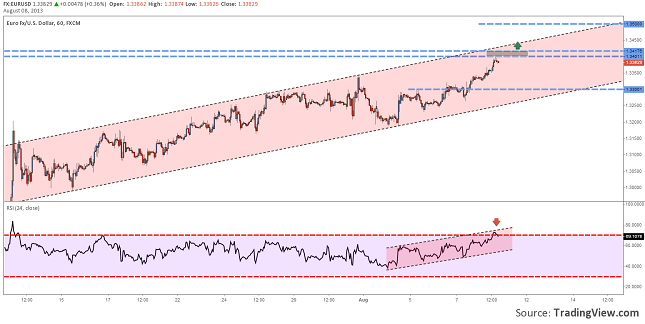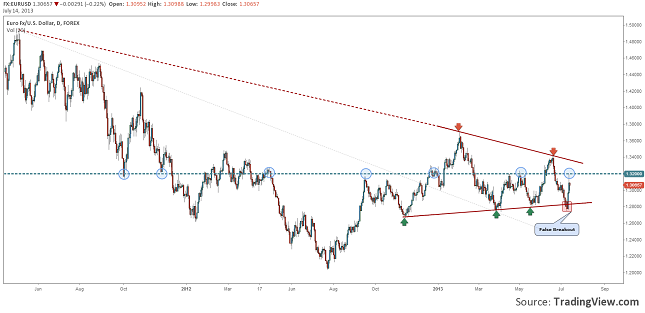Well, let us see what are the premises? For the Euro Area we had some very good PMIs published this month, lower unemployment rate and Germany surprised with better than forecast industrial production, trade balance, factory orders and unemployment change. Furthermore the ECB maintained the interest rate unchanged and Mario Draghi recovered his optimism in what concerns the economic evolution of Europe.
Adding to this the fact that Federal Reserve is still maintaining the Quantitative Easing program unmodified we can say that there are reasons for the investors to go long Euro and short the US dollar.
In every FOMC statement and speech of Ben Bernanke it is said that Fed will continue the QE as long as it is necessarily for the labor market to get back on its feet. On the other hand the officials that gave statements to the press believe that the tapering of the program will start in September, because the unemployment rate started to drop and there are signs of economic recovery.
Bering this in mind, we believe that this uptrend will continue until the Fed will announce the tapering of the stimulus and the date that will end the QE.
So to answer our question: The Euro is not yet overbought, but the uptrend might not be sustained for a long period of time.
From the technical point of view, the price has breached above Friday’s top and almost hit 1.3400. For today it seems that the rally stopped. If this week will close above 1.3350 it will confirm the break above the higher line of the symmetrical triangle (you can find more details reading EURUSD Dragged Towards 1.34 on QE Continuity) and also signal that the uptrend could continue for the rest of August. A false breakout could bring the price back to 1.33 or even lower.
Chart: EURUSD, H1
Looking at the lower time frame we can see that the price has reached a resistance area at 1.3400/20. Adding the overbought in the RSI evolution we should open the eyes for a pullback. A break above the resistance could open the way for another rally that is targeting 1.3500.

